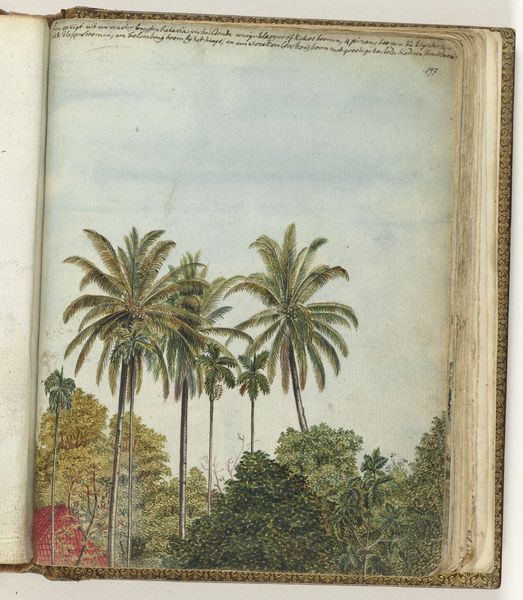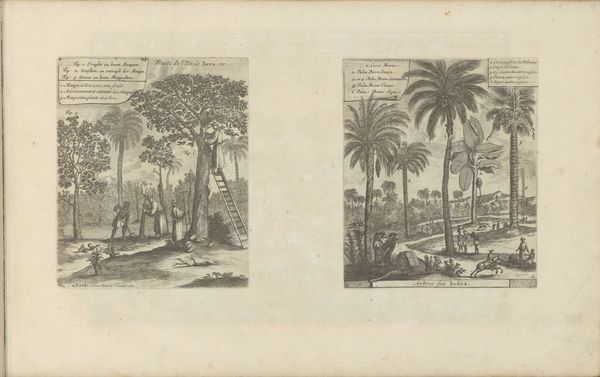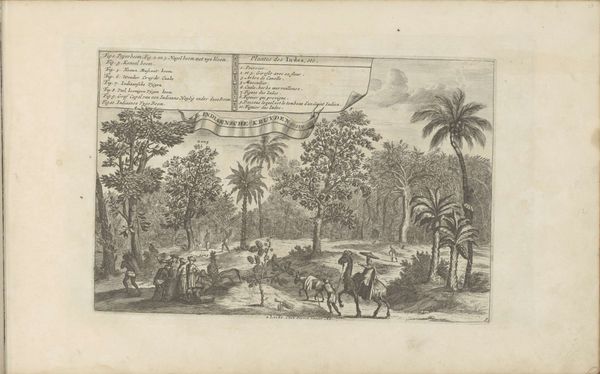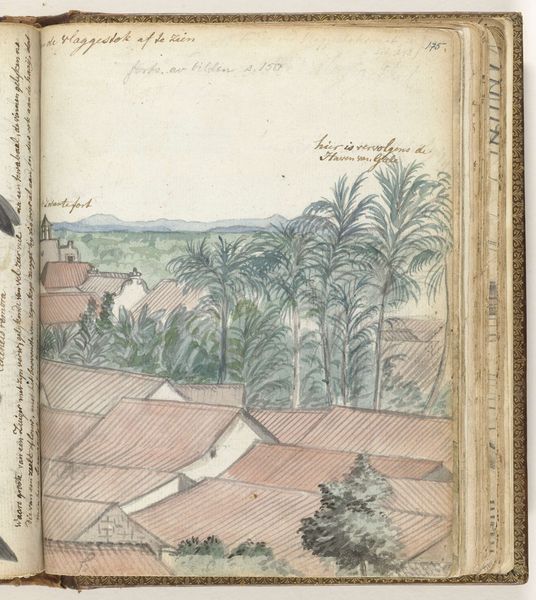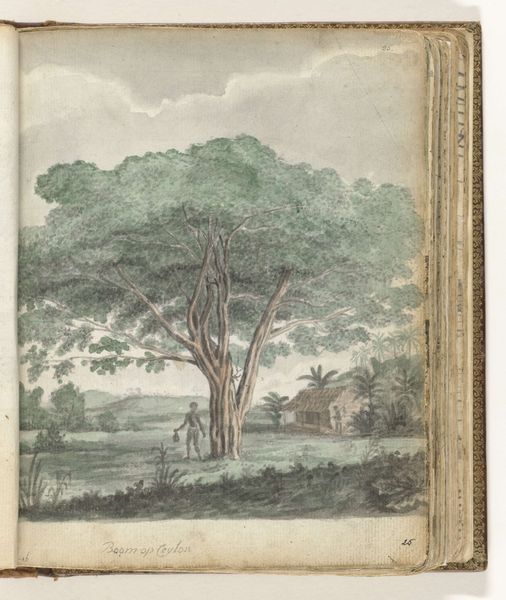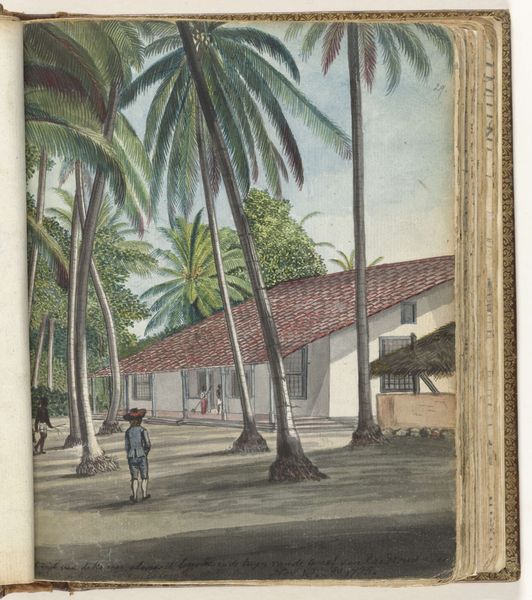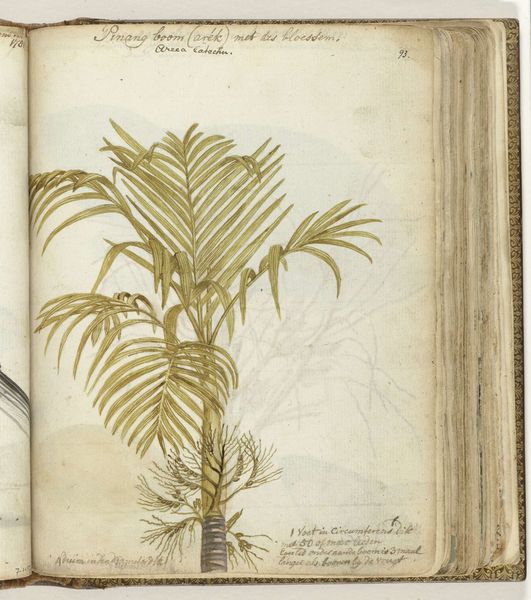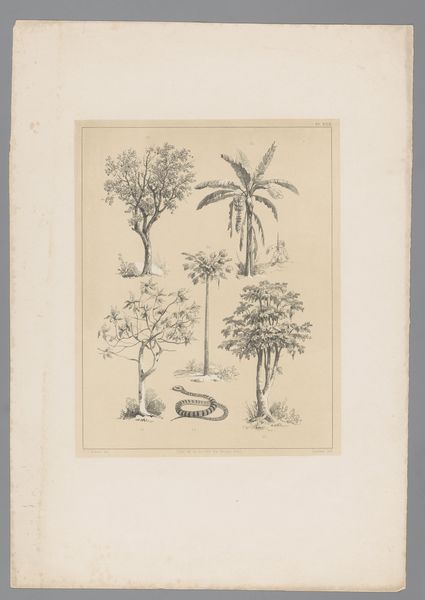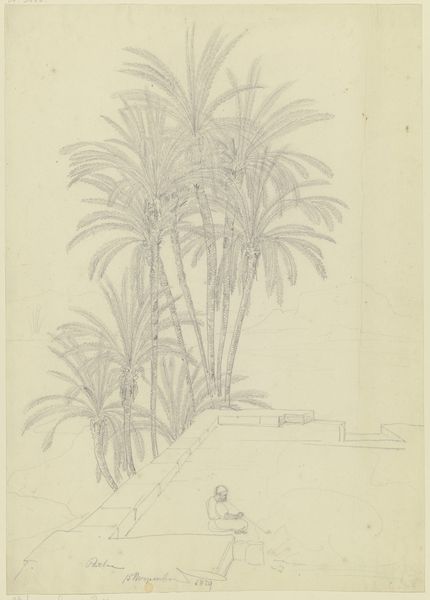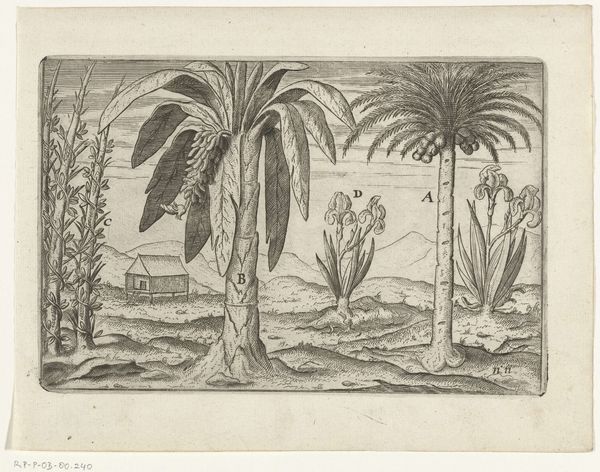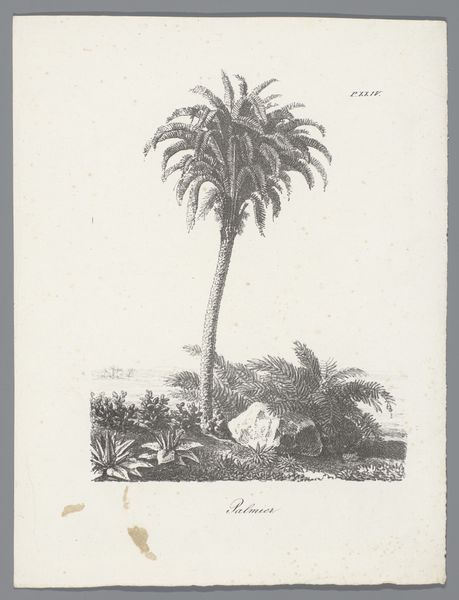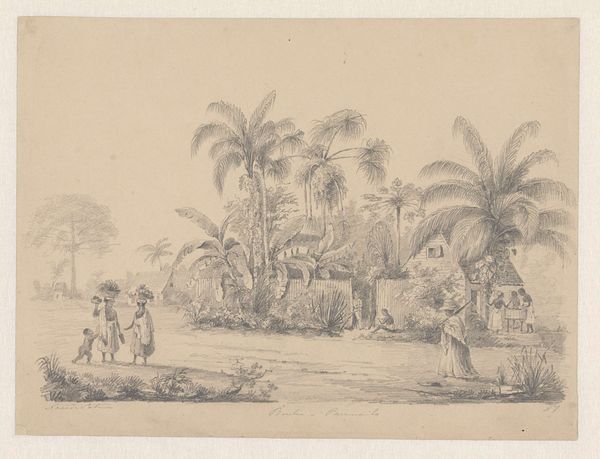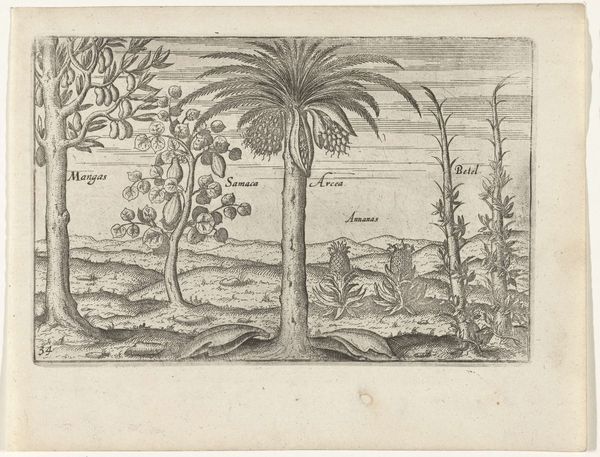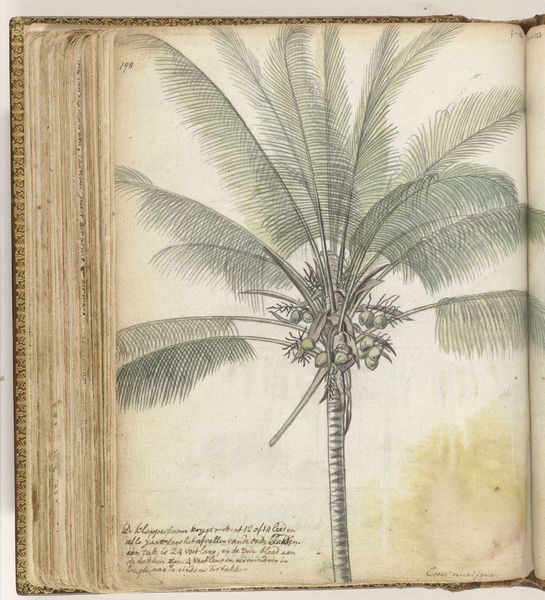
drawing, paper, watercolor
#
drawing
#
water colours
#
landscape
#
indigenism
#
paper
#
watercolor
#
coloured pencil
#
orientalism
Dimensions: height 195 mm, width 155 mm
Copyright: Rijks Museum: Open Domain
Editor: Here we have "Pinangbomen bij landgoed," or "Pinang Trees at an Estate," possibly created between 1779 and 1788 by Jan Brandes, using watercolor and colored pencil on paper. It's really fascinating to see this glimpse into what appears to be an Indonesian landscape through the eyes of a European artist. What stands out to you in this piece? Curator: What strikes me immediately is the artist's focus on the Pinang trees. Notice how they dominate the composition, almost like stylized totems. Trees, across cultures, have symbolized life, growth, and connection to the earth. Consider how the act of depicting them – especially within a colonial context – assigns a certain power or exoticism. Does Brandes capture botanical accuracy or something more… symbolic? Editor: I see what you mean! It does seem like the trees are almost monumental, not just descriptive. Is there a connection to how the local figures are presented? Curator: Precisely. Look at the scale difference. The indigenous figures climbing or standing near the trees appear small, almost subservient, in relation to the towering palms. The artist likely aims to depict the "exotic" local population, yet consider if it implies more complex societal and cultural meanings. Does this echo existing power dynamics in the region at that time, where the land and its resources, like the Pinang, were exploited? Editor: That's a perspective I hadn't considered. It brings to light the power dynamics represented here. The way we frame "landscape" can be full of ideological content, huh? Curator: Exactly! By carefully examining the recurring imagery, and by comparing the visual representation of nature with people, the picture unveils more than just the appearance of a faraway scenery, which gives the art psychological, historical, and social weight over time. Editor: Thank you for guiding me through the visual language of this work! I see so much more now than just trees and people.
Comments
No comments
Be the first to comment and join the conversation on the ultimate creative platform.
